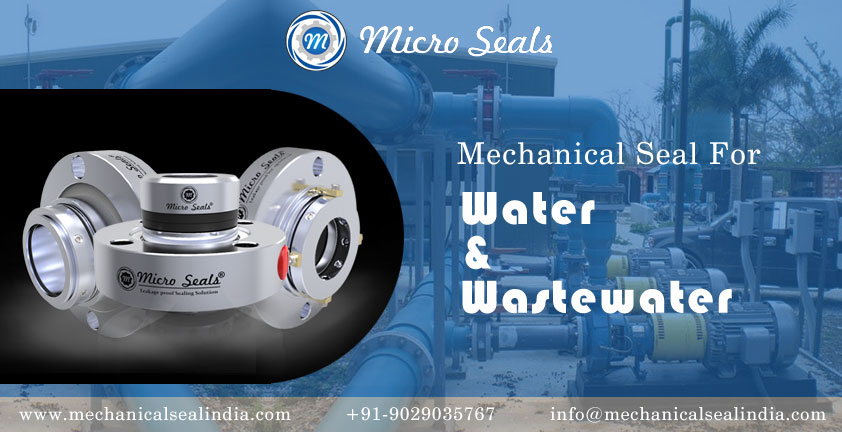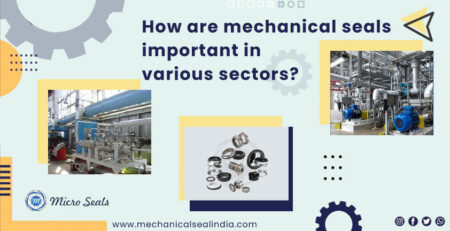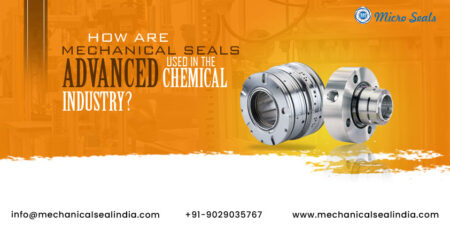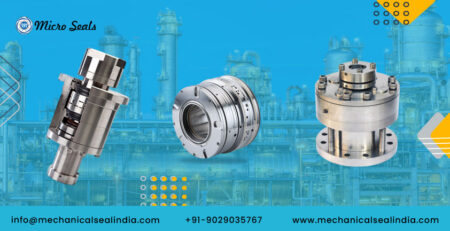How to Choose the Best Water Pump Seals for Wastewater Applications
Mechanical seals are design to prevent leakage between the rotating shaft and the stationary parts of the pump, protecting the system from contamination. Selecting the right seal is key to maintaining optimal performance and minimizing maintenance in these demanding environments.
This article covers the specific requirements for wastewater pump seals, different types of mechanical seals available, material considerations for harsh conditions, and best practices for seal selection and maintenance
Table of Content
Understanding Wastewater Pump Seal Requirements
- Challenges in wastewater applications
- Key factors affecting seal performance
- Importance of proper seal selection
Types of Mechanical Seals for Wastewater Pumps
- Single seals
- Double (dual pressurized) seals
- Tandem seals
- Cartridge seals
Material Considerations for Wastewater Pump Seals
- Corrosion-resistant materials
- Abrasion-resistant materials
- Elastomer selection
- Face material combinations
Best Practices for Seal Selection and Maintenance
- Analyzing application requirements
- Proper installation techniques
- Regular inspection and monitoring
- Preventive maintenance strategies
Understanding Wastewater Pump Seal Requirements
Challenges in wastewater applications
Wastewater pump seals face numerous challenges due to the abrasive and potentially corrosive nature of the fluid they handle. The presence of solid debris in wastewater adds to the complexity of sealing requirements. These harsh conditions can lead to premature wear and tear of seal components, making it essential to choose the right seal type and materials for optimal performance.
Key factors affecting seal performance
Several factors influence the performance of water pump seals in wastewater applications. The type of wastewater being processed, whether municipal or industrial, plays a crucial role in determining the appropriate seal solution. The presence of chemicals, abrasive particles, and solid debris in the wastewater can have a significant impact on seal longevity. Additionally, temperature variations and pressure fluctuations can affect seal integrity and performance.
Importance of proper seal selection
Selecting the right mechanical seal for wastewater pumps is critical to ensure efficient and safe operation. Double mechanical seals, also known as tandem seals, are often preferred in wastewater applications due to their ability to provide a clean barrier fluid between two seal faces . This arrangement prevents direct contact between the wastewater and the outer seal, enhancing seal life and reliability.
Importance of proper seal selection
Selecting the right mechanical seal for wastewater pumps is critical to ensure efficient and safe operation. Double mechanical seals, also known as tandem seals, are often preferred in wastewater applications due to their ability to provide a clean barrier fluid between two seal faces . This arrangement prevents direct contact between the wastewater and the outer seal, enhancing seal life and reliability.
When choosing seal materials, it’s crucial to consider their resistance to chemicals and abrasive particles commonly found in wastewater. Hard face materials like silicon carbide are often recommended for their increased resistance to abrasion for elastomers, materials such as Viton, EPDM, and Nitrile are suitable for various wastewater applications.
Proper seal selection not only ensures optimal pump performance but also helps minimize maintenance costs and reduce the risk of environmental contamination due to leakage.
Types of Mechanical Seals for Wastewater Pumps
Single seals
Single mechanical seals are a common choice for wastewater applications. These seals consist of stationary and rotating faces made from one hard and one softer material. They offer significant cost and energy savings compared to traditional gland packing. Single seals are hydraulically balanced, which helps reduce power consumption and increase reliability. They can be further categorized into split and nonsplit designs, with nonsplit seals typically featuring a cartridge design for easy installation.
Double (dual pressurized) seals
Double mechanical seals provide maximum sealing safety for wastewater pumps. They virtually eliminate leakage of potentially hazardous or toxic substances, making them essential for certain applications and environmental compliance. These seals offer near-complete control over the seal operating environment and fluid film, which can greatly extend seal life. Double seals require a barrier or buffer fluid between the primary seals, delivered through a piping plan to cool and lubricate the seal faces.
Double (dual pressurized) seals
Double mechanical seals provide maximum sealing safety for wastewater pumps. They virtually eliminate leakage of potentially hazardous or toxic substances, making them essential for certain applications and environmental compliance. These seals offer near-complete control over the seal operating environment and fluid film, which can greatly extend seal life. Double seals require a barrier or buffer fluid between the primary seals, delivered through a piping plan to cool and lubricate the seal faces.
Tandem seals
Tandem seals, also known as dual unpressurized seals, are commonly used in submersible wastewater pumps. This arrangement features two individual seals positioned in the same direction, with oil typically used as the barrier liquid between the pump and motor. In tandem seals, the pressure between the seals is lower than the seal chamber pressure, usually atmospheric. The outer seal serves as a safety seal or containment device, while the inner seal faces are lubricated by the pumped fluid.
Cartridge seals
Cartridge seals are pre-mounted units that include all seal elements in a single assembly. They fit directly over the shaft or shaft sleeve and are available in single, double, and tandem configurations. Cartridge seals offer several advantages, including reduced installation times, lower maintenance costs, and fewer seal setting errors. These seals are versatile and can be used in a variety of rotary equipment, making them suitable for various industries, including wastewater treatment.
Types of Mechanical Seals for Wastewater Pumps
Corrosion-resistant materials
When selecting water pump seals for wastewater applications, corrosion resistance is crucial. Stainless steel (304 or 316) and titanium are commonly used materials for corrosion-resistant pumps. These materials offer excellent protection against the harsh chemicals often present in wastewater. For instance, 316 stainless steel casting is particularly effective in applications involving heavy-duty work, providing improved reliability compared to standard stainless steel.
Abrasion-resistant materials
Wastewater often contains abrasive particles, such as sand, which can cause significant wear on pump components. To address this challenge, mechanical seals with hard face materials are recommended. Silicon carbide is a popular choice due to its exceptional wear resistance and thermal conductivity. In fact, silicon carbide offers five times higher corrosion, wear, and heat resistance compared to tungsten carbide.
Elastomer selection
Selecting the right elastomer for secondary seals is critical in wastewater pump applications. Common elastomer materials include Viton (FKM), EPDM, and nitrile (Buna-N). Each elastomer has its strengths and weaknesses, making it essential to consider factors such as chemical compatibility, temperature range, and abrasion resistance. For instance, Viton offers excellent resistance to a wide range of chemicals and high temperatures, making it suitable for demanding wastewater environments.
Face material combinations
The choice of face materials in mechanical seals significantly impacts their performance in wastewater applications. A common combination is carbon graphite against a harder material like silicon carbide or tungsten carbide. This pairing provides a balance of wear resistance and self-lubricating properties. For highly abrasive wastewater, double mechanical seals with silicon carbide faces on both sides may be the most effective solution.
Best Practices for Seal Selection and Maintenance
Analyzing application requirements
To choose the best water pump seals for wastewater applications, it’s crucial to understand the specific conditions they will face. Pressure, temperature, and speed are key factors that can affect seal performance. By gaining a comprehensive understanding of the pumping process, operators can select appropriate mechanical seals and maintenance procedures. Partnering with experts who understand the process can offer tailored advice on pump sizing and seal material compatibility.
Proper installation techniques
Correct installation of water pump seals has a direct impact on their wear and tear during operation. To ensure proper installation, technicians should follow manufacturer guidelines and use the right amount of lubrication to keep friction low. It’s essential to inspect the shaft for debris, burrs, or defects before installation, and measure shaft runout to ensure it’s within the seal’s tolerance.
Regular inspection and monitoring
Implementing a proactive maintenance schedule is vital for extending the life of pump seals and preventing unexpected failures. Regular inspections should be conducted to identify potential issues such as misalignment or wear and tear. Performance monitoring, including flow rate, pressure, and energy consumption, can help detect early signs of problems. Vigilance in monitoring mechanical seals for signs of wear, damage, or leakage is crucial.
Preventive maintenance strategies
Preventive maintenance is key to optimizing the performance and longevity of water pump seals. Regular cleaning and maintenance of sewage pumps can prevent blockages and ensure efficient operation. Proper lubrication is essential, as mechanical seals rely on a fluid film between the seal faces to reduce heat and friction. Installing a dry-run monitor or flow sensor can alert users when there’s insufficient fluid in the system, preventing seal damage.
Conclusion
Selecting the right water pump seals for wastewater applications has a significant impact on the efficiency and safety of pumping systems. By carefully considering factors like corrosion and abrasion resistance, elastomer compatibility, and face material combinations, operators can optimize their seal performance and extend equipment life. What’s more, understanding the specific challenges of wastewater environments and choosing the appropriate seal type be it single, double, or tandem is crucial to prevent leaks and protect both workers and the environment.
To wrap up, proper installation techniques, regular inspections, and preventive maintenance strategies are key to getting the most out of water pump seals in wastewater applications. By partnering with experts, following best practices, and staying vigilant in monitoring seal performance, operators can ensure their pumping systems remain efficient and reliable. This approach not only cuts down on maintenance costs but also helps maintain the integrity of wastewater treatment processes, ultimately contributing to safer and more sustainable operations.
When choosing the correct mechanical seal for your pump or other rotating equipment, consider the following factors: the name and concentration of the process fluid, temperature, viscosity, pressure, solids content or abrasives, environmental regulations, shaft size, and the type of equipment (e.g., blower, mixer, pump).
The most common type of seal used in water pumps is the single mechanical seal. This type of seal helps to ensure that the liquid remains within the pump head and prevents leaks at the back of the pump casing, where the shaft enters.
Water pumps can utilize various mechanical seals, including compact, single-spring, elastomer bellows seals. These are suitable for small centrifugal water pumps, deep and shallow well jet pumps, swimming pool pumps, submersible pumps, and wastewater pumps.
Cartridge seals differ from component seals in that they are encased within secure housings, which protect them from damage during transportation or installation. In contrast, component seals have exposed parts and require precise measurements during installation to avoid failures.
For new water pump gaskets, it’s advisable to use a sealant compatible with both the gasket and engine materials. Common choices include RTV silicone gasket makers, designed specifically for automotive applications and resistant to coolant and oil. Some gaskets may not require sealants, especially those made from paper or rubber. Always check the manufacturer’s recommendations. Anaerobic sealants like Loctite or Permatex Anaerobic Gasket Maker are also suitable for metal-to-metal joints. Ensure surfaces are clean and free of old gasket material before application, apply a thin, even layer of sealant, and allow it to cure as per the manufacturer’s instructions.
To Know More about mechanical seal supplier Read Our Blog Post on top mechanical seal supplier For More mechanical seal services Information, Check out our Mechanical Seals Repair Page.
Microseals Is ISO 9001:2015 Certified Company and Leading Mechanical Seals Manufacturer & Supplier In India, Providing Leakages Solutions To All Types Of Pump Applications By Manufacturing Mechanical Seals And Sealing Components As Per Customer’s Require, Samples or Need. To Know More About Mechanical Seal Call On +91 – 9029035767 Or Email At [email protected]




